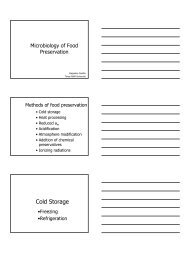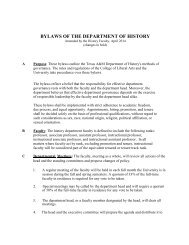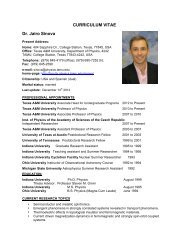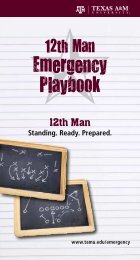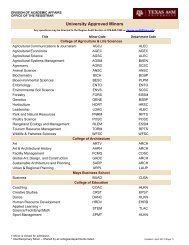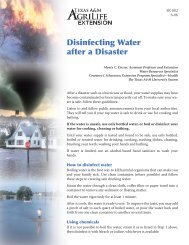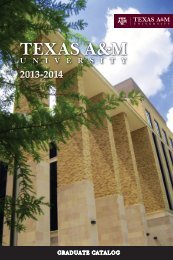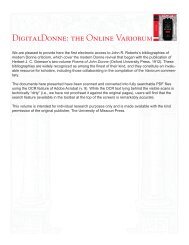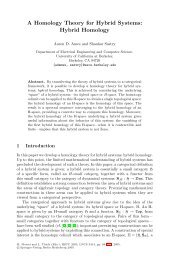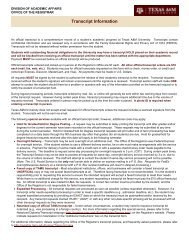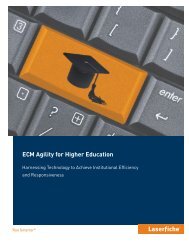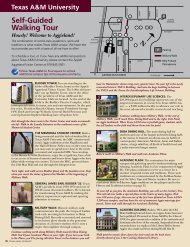ODP Final Technical Report - Ocean Drilling Program - Texas A&M ...
ODP Final Technical Report - Ocean Drilling Program - Texas A&M ...
ODP Final Technical Report - Ocean Drilling Program - Texas A&M ...
Create successful ePaper yourself
Turn your PDF publications into a flip-book with our unique Google optimized e-Paper software.
<strong>ODP</strong> <strong>Final</strong> <strong>Technical</strong> <strong>Report</strong>The <strong>Ocean</strong> <strong>Drilling</strong> <strong>Program</strong> (<strong>ODP</strong>)operated successfully under NationalScience Foundation (NSF) Contracts<strong>ODP</strong>83-17349 (1 October 1983–30 September1993) and OCE93-08410 (1 October 1993–30September 2007). The <strong>ODP</strong> <strong>Final</strong> <strong>Technical</strong><strong>Report</strong> provides an overview of the managementand organization of <strong>ODP</strong> and highlights20 years of technical and scientific accomplishments.<strong>Ocean</strong> <strong>Drilling</strong> <strong>Program</strong>Administration<strong>ODP</strong> was the direct successor of the DeepSea <strong>Drilling</strong> Project (DSDP), which began in1968. DSDP sampled the global seafloor bydeep ocean coring and downhole logging, andits accomplishments were striking. Researchbased on the samples strongly supported thehypotheses of seafloor spreading—the relationshipof crustal age to the record of Earth’smagnetic reversals—and plate tectonics.<strong>ODP</strong> was an international partnership ofscientists and research institutions organizedto explore Earth’s history and structure asrecorded in the ocean basins. <strong>ODP</strong> providedsediment and rock samples (cores), downholegeophysical and geochemical measurements(logging), opportunities for special experimentsto determine in situ conditions beneaththe seafloor, and shipboard and shore-basedfacilities for the study of samples. <strong>ODP</strong> studiesled to a better understanding of plate tectonicprocesses, Earth’s crustal structure and composition,environmental conditions in ancientoceans, and climate change.<strong>ODP</strong> was funded by NSF and by internationalpartners, which during the course of the <strong>Program</strong>included the Australia/Canada/ChineseTaipei/Korea Consortium for <strong>Ocean</strong> <strong>Drilling</strong>,the European Science Foundation Consortiumfor <strong>Ocean</strong> <strong>Drilling</strong> (representing Belgium,Denmark, Finland, Greece, Iceland, Ireland,Italy, Norway, Portugal, Spain, Sweden, Switzerland,The Netherlands, and Turkey), France,Germany, Japan, the United Kingdom, Russia,and the People’s Republic of China. The<strong>ODP</strong> Council, representing all of the partners,provided a forum for exchange of views amongmember nations and reviewed financial,1984 1985a Sampling ofHistoric Eventsduring the<strong>Ocean</strong><strong>Drilling</strong><strong>Program</strong>Converted the oilexploration drillingvessel SEDCO/BP 471 forscientific ocean drilling.Leg 100, Gulf of Mexico:Initiated scientific drillingoperations and sailed thedrillship on its firstscientific expedition.Leg 105, Baffin Bay and Labrador Sea: Collectedalmost 1 mile of sediment and rock cores from as deepas 1,147 meters beneath the seafloor at the highest latitudeand in the deepest water ever drilled that far northby a scientific vessel.Leg 106, Mid-Atlantic Ridge: Collected first samplesever taken adjacent to Atlantic <strong>Ocean</strong> “black smokers.”



